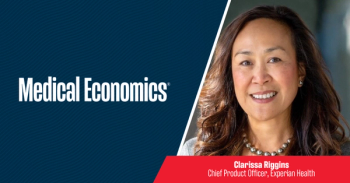
The key to understanding consumer-centric healthcare
For over a decade, we have seen the steady rise of consumerism in healthcare. Far more than an emerging trend, it is now something that will dramatically alter the U.S. healthcare delivery system...for the better.
For over a decade, we have seen the
Popular online:
The changes that have occurred thus far are likely to pick up speed, in part because of who will be working for the White House. Trump’s choice for Secretary of Health & Human Services, Tom Price, MD, is a supporter of consumer-centric health plans. Further, Vice President Mike Pence brings with him experience as governor of Indiana where he oversaw the implementation of consumer-centric healthcare policies. Adding to that, Pence’s health plan architect was Seema Verma, who’s been tapped to head the
The essentials of consumer-centric healthcare include empowering the patient to make choices, be involved in the decision-making process for her/his care and, it should be emphasized, understand what the costs are upfront by way of transparent pricing and candid conversation.
The driver behind this consumerism is the emergence of high-deductible health plans (HDHP). Back in the day, a patient’s financial responsibility for their healthcare was often a single digit percentage of the cost, if that. Now, with HDHPs, a patient is confronted with 30% to 50% of the financial responsibility for their care.
It is simplistic to label high deductibles as the villain. At the heart of Indiana’s Healthy Indiana Plan (HIP 2.0) for Medicaid patients, is an HDHP along with a health savings account (HSA) that is built by plan members paying 2% of their income into it each month, along with subsidies from the state. Until their deductibles are reached, patient payments can be made from the HSA. On the surface, this is pretty standard stuff. Interestingly, a report issued in July 2016 by the
â Reduce the number of uninsured low-income Indiana residents and increase access to healthcare services
â Promote personal health responsibility
â Promote disease prevention and health to achieve better health outcomes
Blog:
Along with those accomplishments, the study found plan member satisfaction rates were high, with 80% indicating they were satisfied with the program. These members also engaged with their healthcare process. For example, 42% checked the balances in their accounts every month and 27% asked providers about the cost of care. Just 1% to 2% of members missed an appointment because of cost. Lastly, Indiana reported that a varying co-payment feature for emergency department use resulted in fewer inappropriate uses of emergency services as compared to the traditional Medicaid benefit.
The point of highlighting the Indiana experience is to show that consumer-centric healthcare must be a true, balanced collaboration involving the health plan (or insurer), the medical group and, of course, the patient.
Blog:
Everyone needs to make smart decisions as it regards the actual health of the patient and the business health of healthcare.
Regardless of the health plan, medical groups are seeing a greater portion of the financial obligation as the patient’s responsibility. Unlike the process of filing claims with insurance companies and getting paid every couple of weeks, collecting from patients is a real challenge.
It costs more, and takes more time to collect, as many aspects of patient billing woefully underutilize information technology and digital communications like email. Remarkably, nearly
All too often, attention is placed on the clinical side of healthcare. Granted, that’s done for good reason as positive, enhanced outcomes are what healthcare professionals strive for each day. Nonetheless, consumer-centric healthcare will create competitive forces in the marketplace that will demand that providers become more efficient in their business practices as well, in part by employing low-cost, high-quality technologies.
Anyone who thinks this can wait is wrong. Healthcare is consuming more of the U.S. economy than ever before. CMS notes “the delta between healthcare spending and GDP growth reached a six-year high in 2015,” representing 17.8% of GDP. It estimates that healthcare will total 20.1% of the economy by 2025.
William Blair, an investment house that concentrates on the healthcare industry, offers the
While digital interactions between provider and patient are moving “in the right direction,” according to the American Hospital Association, it is seen by William Blair as “still short of ubiquitous.” Interestingly, most of that digital interaction centers on patients looking up medical records online.
In the news:
In its report, the firm suggests there is “still room to grow the trend of hospitals moving more administrative functions online.” Shifting patient billing from paper to electronic is just one area that can realize meaningful savings as well as provide a better experience for the patient. It should not seem surprising that 70% of healthcare consumers surveyed by
The Centers for Disease Control and Prevention (CDC)
While that logic is tough to take issue with, it represents one element, albeit a critical one, of the equation that can result in better healthcare that costs less.
Tom Furr founded Durham, North Carolina-based PatientPay, the patient payment solutions company that offers a patented online billing, collection and reconciliation services that can be embedded in all current popular management and healthcare information systems, to enhance the productivity and profitability of medical practices, ambulatory networks, and hospital systems.
Newsletter
Stay informed and empowered with Medical Economics enewsletter, delivering expert insights, financial strategies, practice management tips and technology trends — tailored for today’s physicians.



















